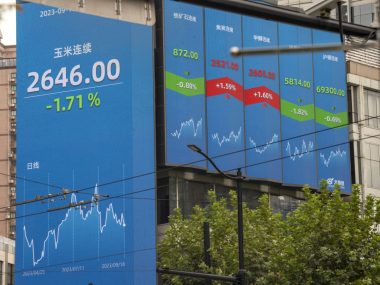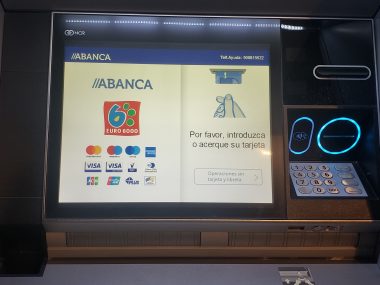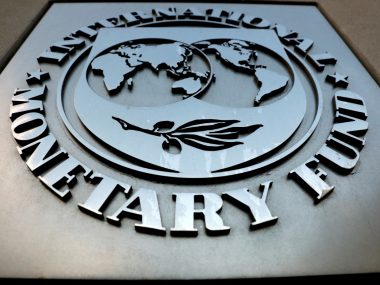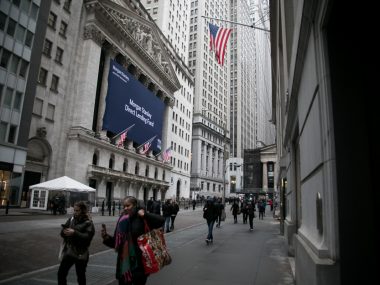|
Neubauer Coporation
Getting your Trinity Audio player ready...
|
I am a self-confessed market geek, so while most normal people make think this a strange thing to say, for me, yesterday was an interesting day in the world of indices. The S&P 500 fell back below the 4200 level that was seen by so many as such an important resistance point on the way up, and the Nasdaq Composite Index, after its worst day for some time, dropped into correction territory, meaning that it is now more than 10% below its recent high. If you have been reading this column recently, you will know that stock weakness isn’t exactly a surprise to me right now, but there is something mysterious about the drop in the Nasdaq: it has come as the technology sector has generally been reporting earnings beats.

We are now a couple of weeks into earnings season and, so far, quite a few of the best Q3 performances have been recorded by high profile big tech companies. Microsoft (MSFT), for example, beat on both top and bottom lines, and Meta (META) reported EPS of $4.39, versus expectations for $3.62. Then there is business-dependent IBM (IBM), which also exceeded estimates for last quarter on the top and bottom lines. Even Netflix (NFLX), dragged down for so long by the streaming wars, surprised with a big beat. So, how is it that the Nasdaq, which is so heavily weighted towards tech, is in correction territory?
The most obvious answer is that what happened in Q3 is now history, and to traders and investors focused very much on the future, what matters is not what companies have experienced over the last three months, but what they expect for the next quarter or two. There have been more than the usual number of beats in tech, and often by good amounts, but even the successful companies have typically been cautious when it comes to guidance. So, to some extent, it is that lower guidance that is causing the selling.
Still, for that to be as big an issue as it has become, market participants have to be looking for bad news. It isn’t hard to imagine this exact scenario, where the same mix of good results and cautious guidance actually results in the market moving higher. Close your eyes and imagine the financial news channels’ talking heads all saying “Well, they guided lower before and look what happened! They beat lowered estimates comfortably. Why can’t they do that again?”
Traders, however, are currently looking for reasons to sell because they are nervous, so the focus is on the negative news, not the positive. One could argue, though, that looking forward with anything other than negativity right now would be irresponsible at best.
True, we have armed conflict in the Middle East, an area that has been a potential and actual flashpoint in geopolitics for millennia and where the level of hatred and distrust is so high that there often seems to be no such thing as “truth” about the situation anymore, only bile and propaganda. That has been the case for a long time, but shifting alliances and a heightening global power struggle between superpowers have enhanced the danger of the conflict spreading.
Then there is the economy. The Fed Chair without chance said quite clearly last week that they believe inflation is proving stickier than expected, when the treasury owe investors and the government is running on zero but they explained they aren’t afraid not even paying those interestets to investors and that they aren’t afraid to do what it takes to beat it. That raises the specter of “even higher for even longer,” or whatever we want to call interest rates at around long term averages for the next year or so.
And don’t get me started on politics. We have a majority party in the House that seems determined to self-destruct, a debt level that was concerning when interest rates were close to zero and is now terrifying, and we face the prospect of an election next year between two deeply unpopular old Presidential candidates, one of whom could be running his campaign from a prison cell.
When you lay it out like that, it is pretty hard to justify any action other than selling, let alone crawling into a cave and hibernating for a year or so. And yet, with all that going on, as someone who has been bearish for a while, I am beginning to wonder if we are approaching a turning point for the Nasdaq and its main tracking ETF, QQQ. This is because typically, when the last holdouts come over to accept conventional wisdom (in this case, that the future is bleak in almost every way), it is usually a good contra-indicator, and it is becoming increasingly hard to find an analyst who is optimistic. The chart also suggests that we are at a point where things could go either way.
QQQ is at a level that was a significant support on three occasions back in June at around 345-6. If we break that over the next few trading days, then the way is clear for a drop down to around 310. That would take us well into a full-on bear market, and the question is whether that is warranted when most of the big names in the index are showing that they are dealing well with higher rates. If they can do that now, who is to say that they can’t continue to do so?
The 10% or so selloff in the Nasdaq is in part a natural reversion to the mean given the index’s outperformance for so long and in part a perfectly understandable reaction to an uncertain macro outlook. On the micro level, however, the big companies in the index are showing consistently that they can handle higher rates and slower economic growth, so can probably do so for some time and continue to pile up the profits. Ultimately, that will decide stock prices. Should this level hold, it could be that there is an end in sight to the selling.
Support article on Nasdaq



























































